How to organize office archives?
Keep documents in order
Keep documents in order
Are you annoyed by the lack of order on your desk? Or maybe you can't find important documents? Both issues can be solved by thoughtful organization of your office documentation. In order to achieve this, it is necessary not only to equip yourself with proper office furniture for document storage, but also to maintain your office archive in order. Today, we will provide some tips on how to organize the storage of corporate documents.
Document storage in the office
Maintaining order in corporate documents is essential. It not only ensures an aesthetically pleasing work environment, but also enhances productivity. With a well-organized corporate archive, all employees can easily locate the most important documents, invoices, and contracts. Office storage also involves ensuring the proper security of sensitive data, such as confidential information or personal data of your clients. Therefore, it is important to have certain corporate documents locked.
The solution that ensures optimal management of your office archive is to invest in suitable furniture. We always consider this aspect in commercial interior design projects. Large cabinets are ideal for long-term storage of binders or cardboard boxes filled with documentation. On the other hand, containers or desk drawers are perfect for storing everyday items and frequently accessed documents. This approach combines organizational efficiency in corporate documentation, proper protection of important documents, and quick access to necessary information.
Which office cabinet for documents should you choose?
The most popular ones have hinged or sliding doors. Inside, they feature carefully planned shelves, racks, and drawers, perfectly suited for commonly used office accessories and equipment. These include items such as binders, stacks of paper, envelopes in popular formats, boxes and cartons, or archival cases. Office cabinets with sliding doors work great as built-in furniture. They come in various sizes, depending on the interior design project and available space. Moreover, the color, shape, and finishing can be almost unlimited.
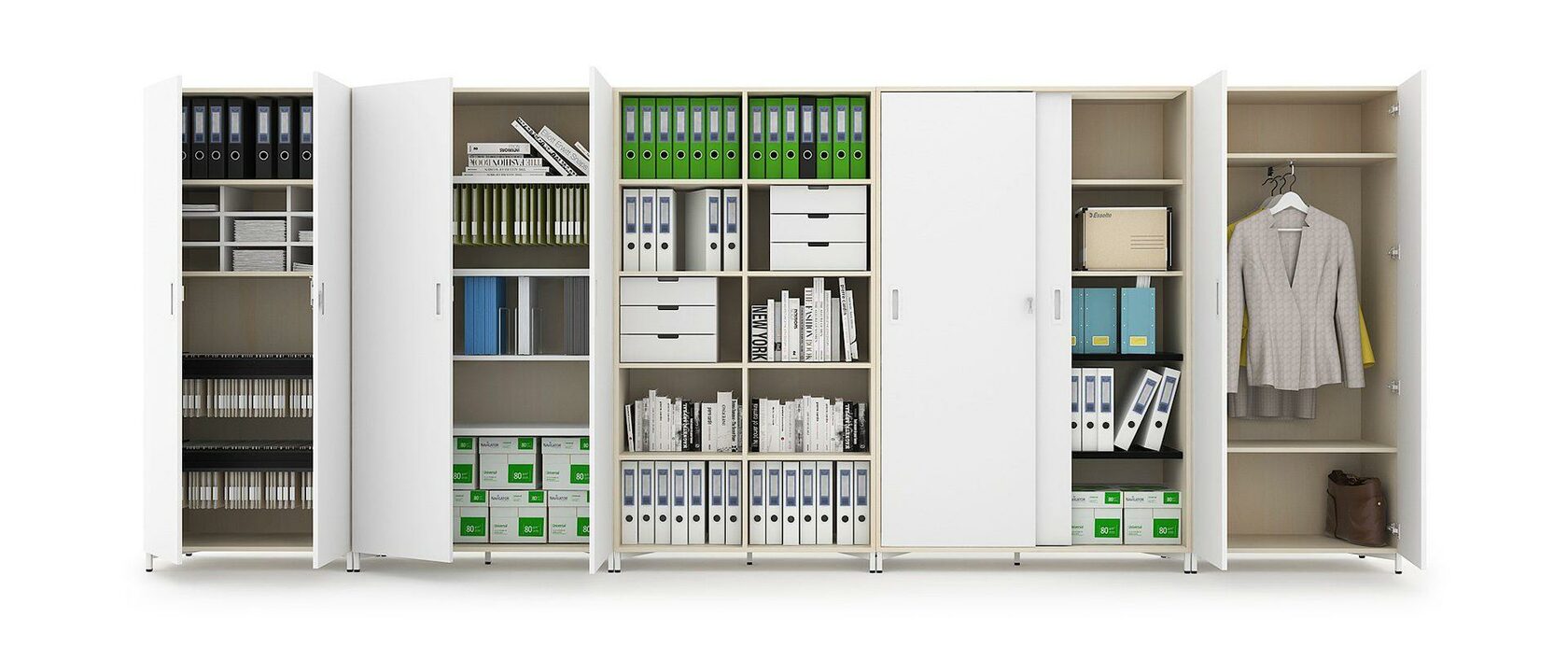
Another popular type of cabinets are tambour cabinets. They function similarly to cabinets with sliding doors, with the difference that opening one module does not block access to the next. The last type of cabinets frequently chosen by our clients are those with open shelves. They work perfectly in offices and spaces where frequent access to documentation or its parts is necessary. The most optimal organization of an office archive can consist of office cabinets of different types and sizes.
How do functional office furniture help in organizing documentation?
The solutions proposed by our designers often involve furniture that facilitates storage. Sets of matching elements, tailored in terms of style and dimensions, fit together perfectly. This allows for almost unlimited arrangement options for any room or open office space. Another advantage of renowned furniture manufacturers is the ease of expansion, for example, if the office archive needs to grow. By choosing branded office furniture, you can be certain that the same products will be available in the future.
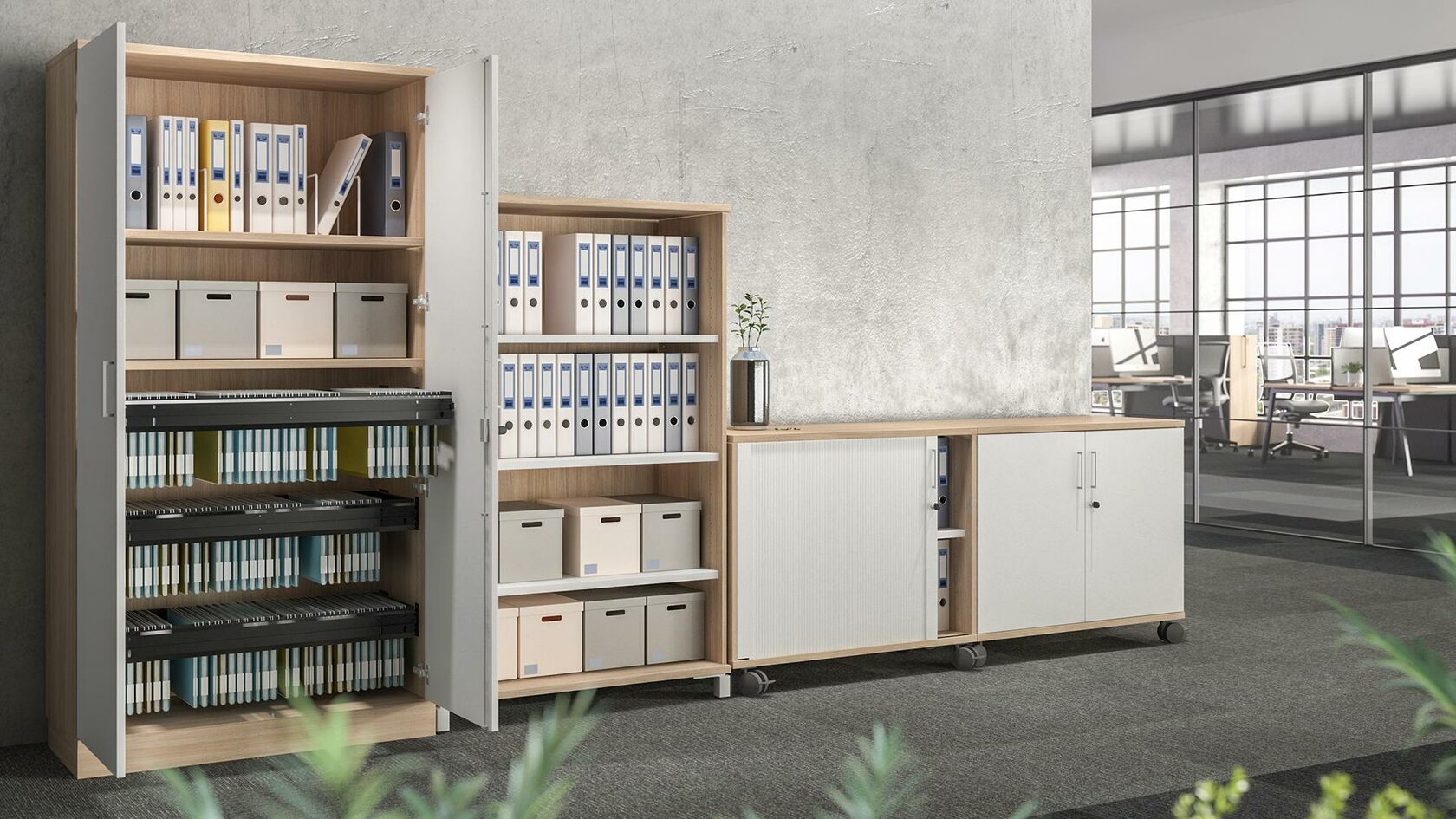
The possibility of expanding office storage space along with the growth of your company can save a lot in the long run. We will take this option into account at an early stage of office design.
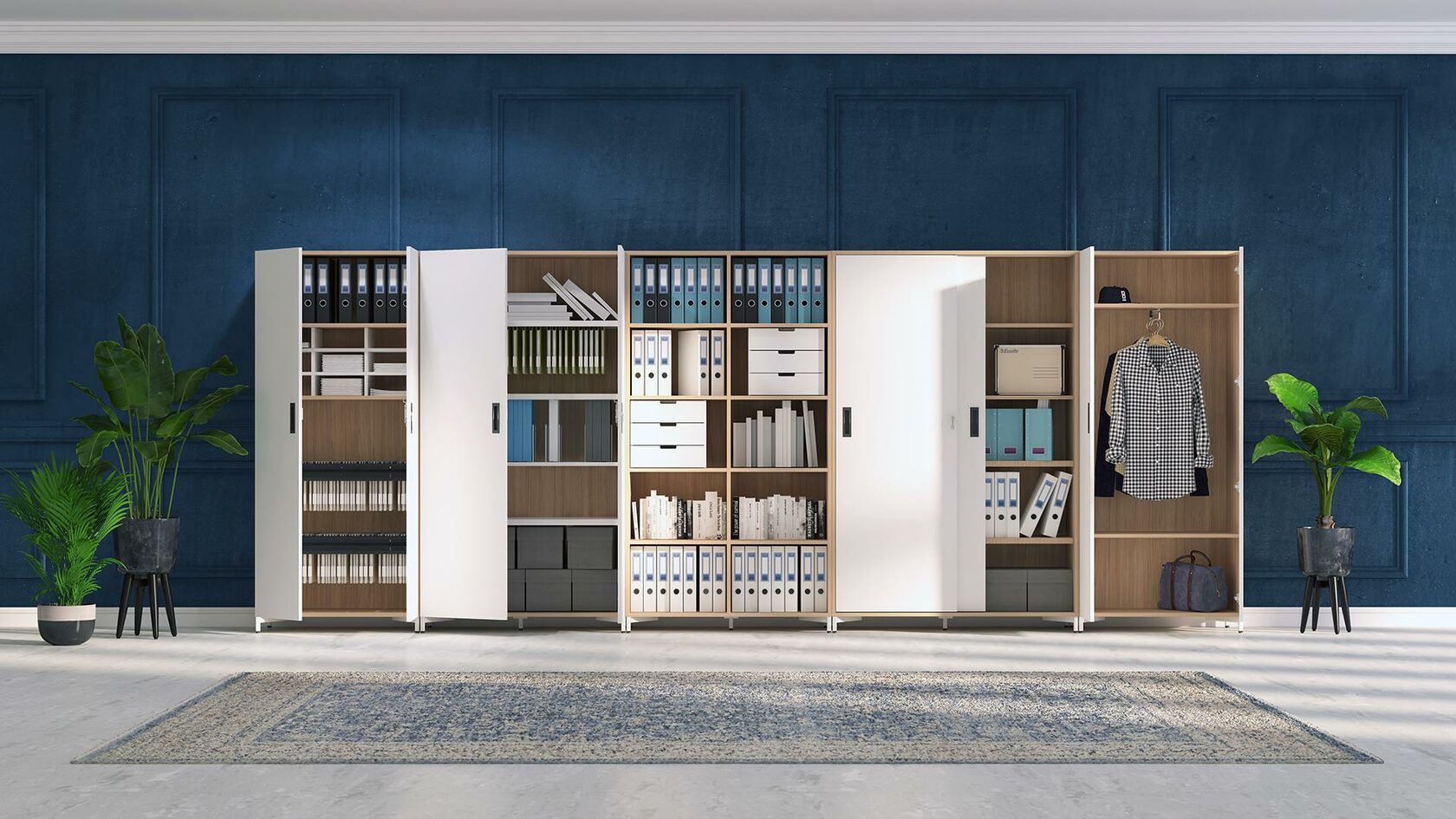
How to maintain order in office documents?
Organizing office documents requires not only the right office equipment but also the proper categorization of each document. Filled binders should be clearly labeled. The organization of office space should also include the appropriate placement of the archive. If possible, office furniture for document storage should be located near the workstations of those who frequently access the archive.
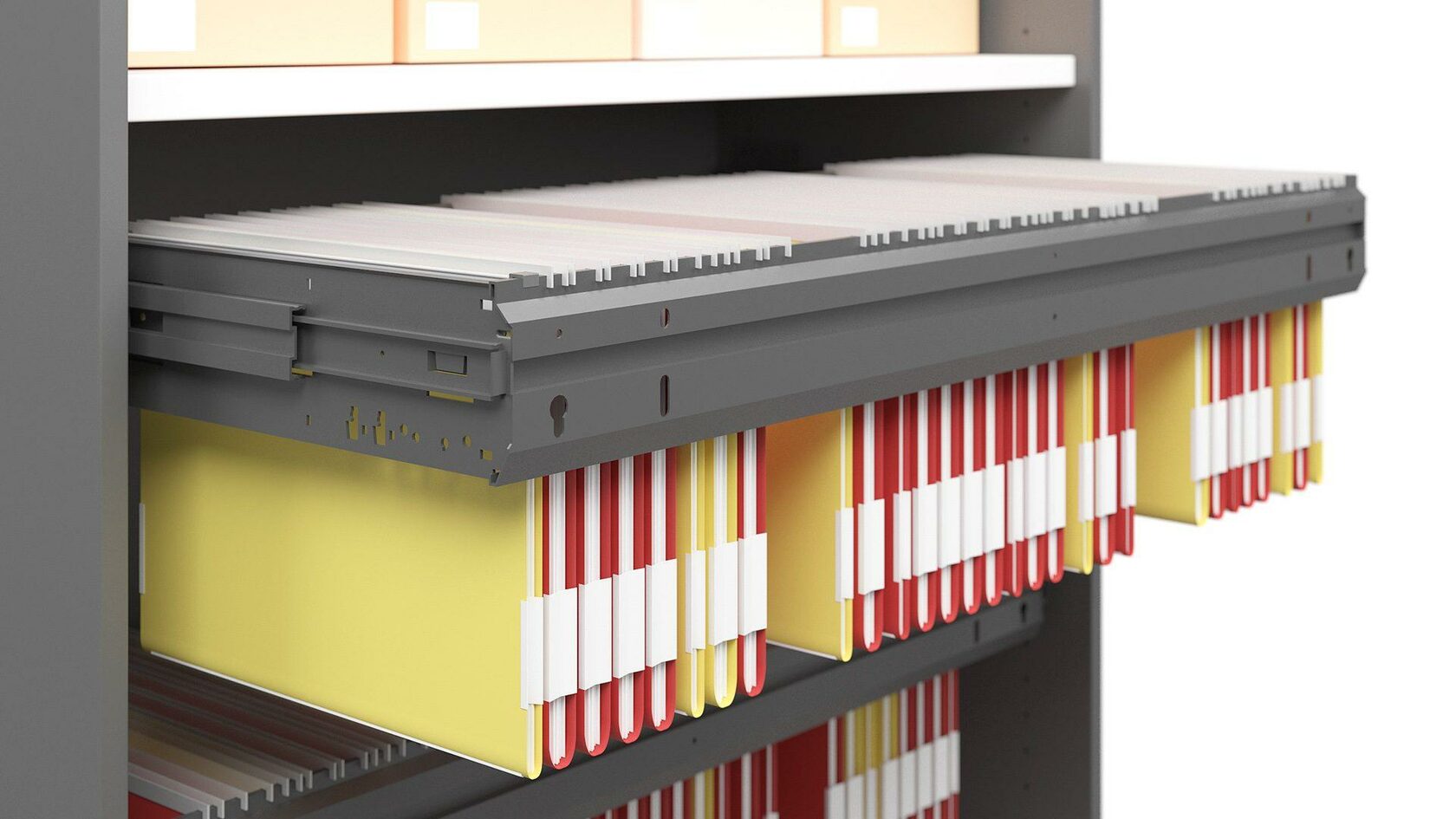
Managing documents in the office can be made simple by using the right accessories. Organizers, binders, sleeves, and envelopes are just a few examples. These tools make document storage in the office easy. Regular review of documentation, disposal of unnecessary documents, and proper selection of information to be placed in each binder or cabinet are also important. By following these few simple guidelines, the work of the entire company can be significantly simplified.
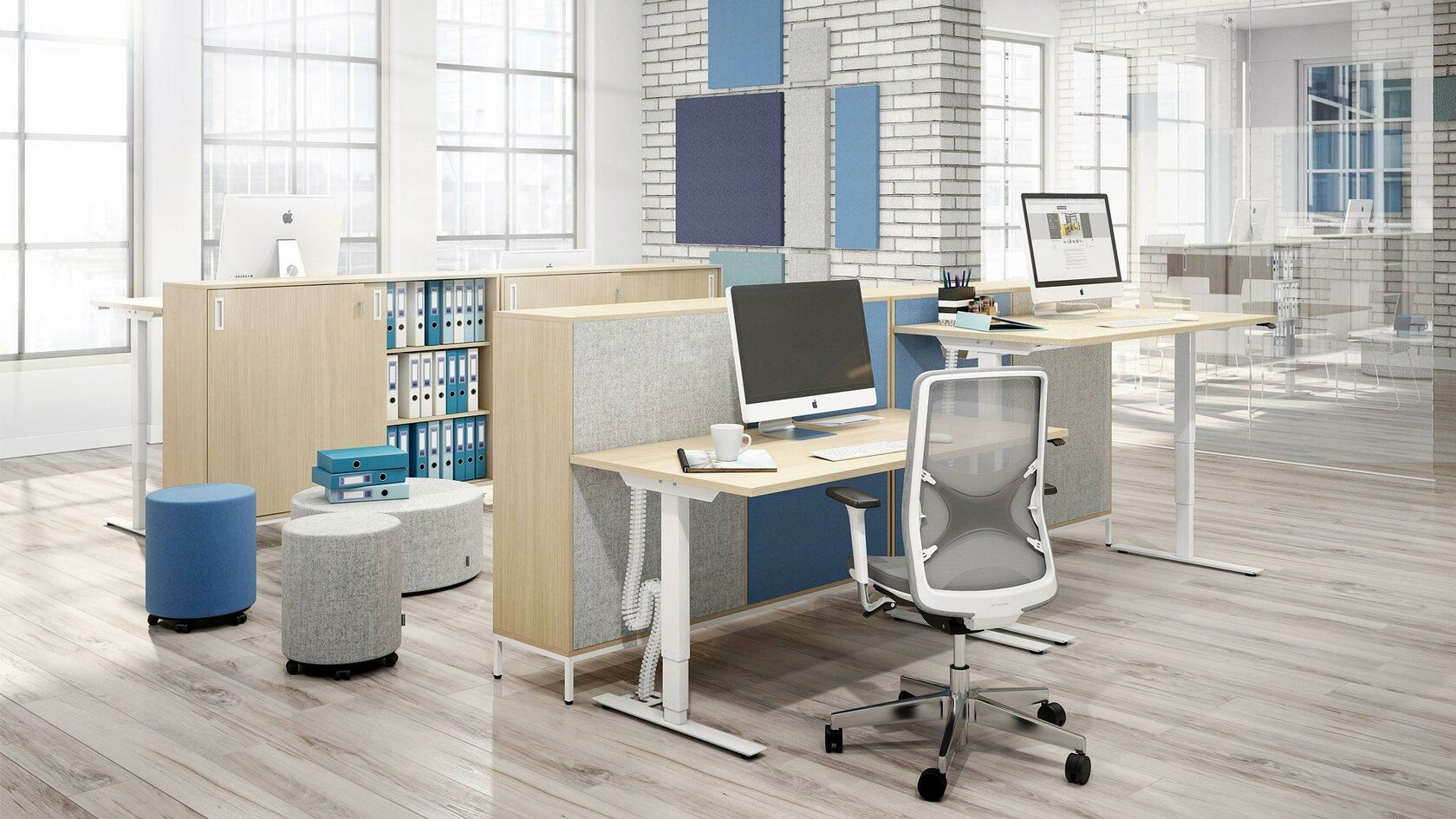
How to protect key documents and confidential data?
Equally important as organizing the office archive is securing it against unauthorized access. For this purpose, cabinets and drawers with locks or access cards can be used. Lockers are also popular today, designed for storing documents and employees' personal items. They work well in hybrid work models and offices with hot-desking systems.
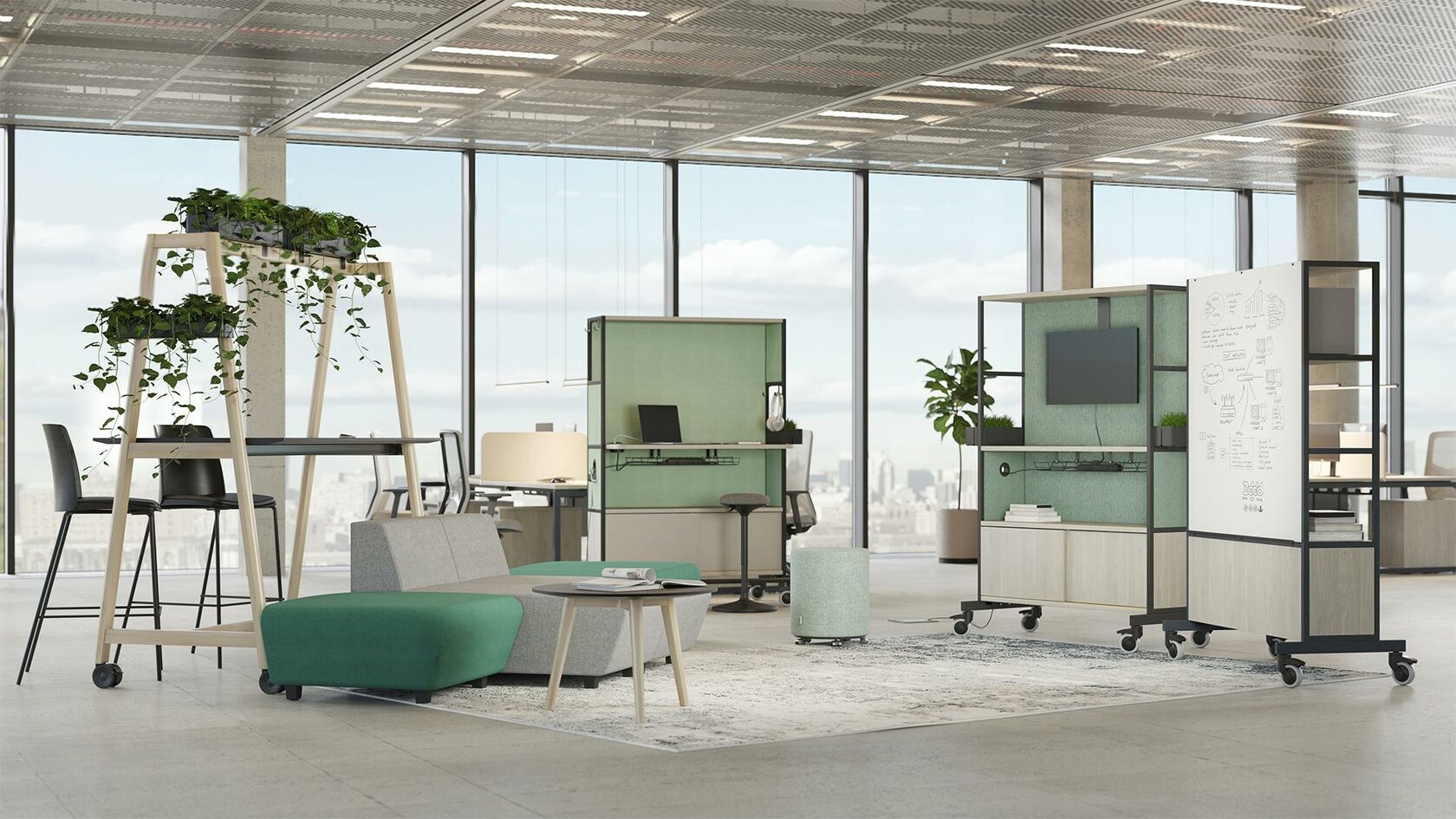
For storing the most sensitive data (such as clients' personal information, confidential information from contractors, company documentation, etc.), armored cabinets should be used. Some companies even allocate separate rooms to create highly secured archives. Such a high standard of securing sensitive information is something that the company can proudly showcase to its clients and collaborators.
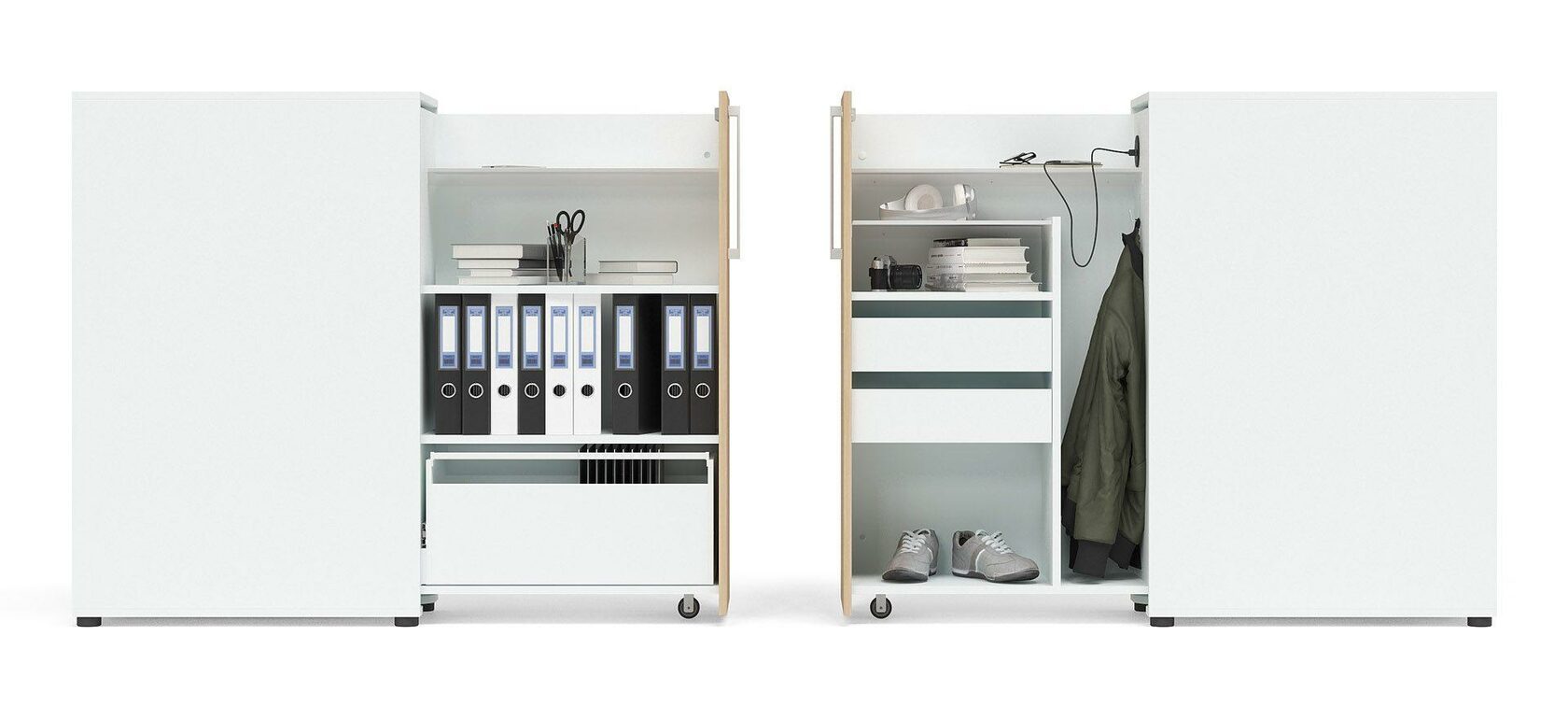
In summary, organizing office archives through thoughtful categorization and proper storage solutions enhances productivity and efficiency. By investing in suitable furniture, implementing labeling systems, and securing sensitive data, companies can create a well-organized and secure work environment.
